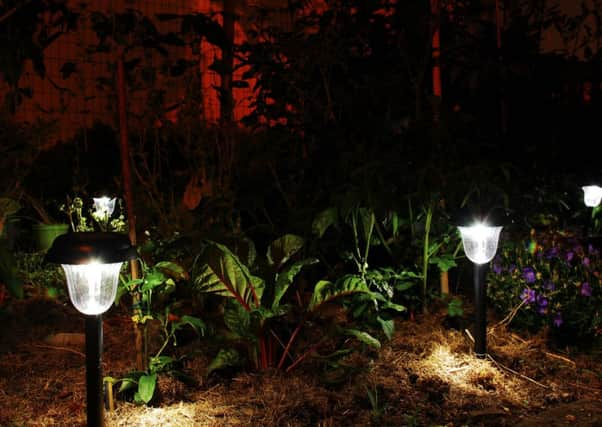Let there be light


To be creative, use accent lighting to highlight the landscaping and pick out key features, such as flowerbeds, water features and trees. Outdoor fairy lights (or lanterns) look lovely wrapped around tree trunks and strung through the branches.
Using different types, colours and strengths of outdoor light creates mood and atmosphere, just as it does indoors. Lighting can be targeted in all directions, depending on the effect you’d like to create. If you don’t want to commit to something as permanent as painting your garden walls a bold colour, you can train coloured lights on them and change the lights when you want a new look.
Advertisement
Hide AdAdvertisement
Hide Ad“External wall lights or lanterns give an even flow of light, while illuminating key features,” says Hector Finch, who owns self-titled lighting company Hector Finch (www.hectorfinch.com). “We recommend zinc as the preferred finish for outdoor lighting. It’s durable, long lasting and keeps its appearance well - it’s often used as a roofing material so it’s sturdy - but some lanterns are just sprayed to look like zinc.”
Garden lighting can also make your home more secure. Security lights, especially ones with sensors, are a good way to deter burglars and make you feel safer when you come home and are at home after dark. A wall light by your front door makes finding your keys easier at night and also makes it easier for visitors to see your house number or name and the garden path.
“Lighting your home’s facade creates a warm welcome,” says Finch. “A permanent light source around your front door is useful, both in terms of security and ambience, while adding light to a front door or porch makes a welcoming first impression.”
The best lights to use outdoors are low-voltage LED ones, which cost a lot less to run than other types. They’re also safer to use and should be cheaper to install and maintain. Good quality ones can last for decades, so they reduce waste, as well as saving you electricity.
Solar lights, of course, cost nothing to run. They store up the sun’s energy in built-in batteries during the day and then come on at dusk, providing a soft, ambient light - don’t expect brightness.